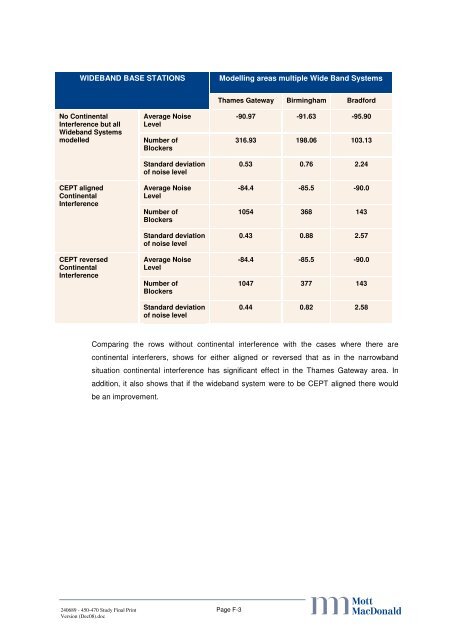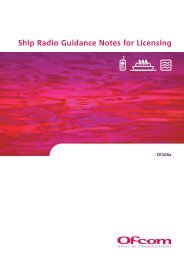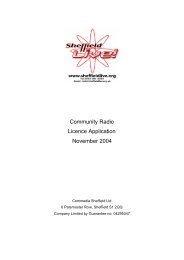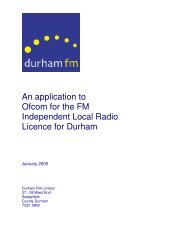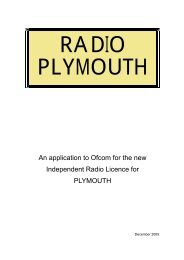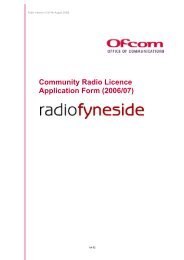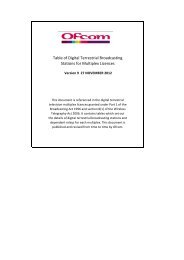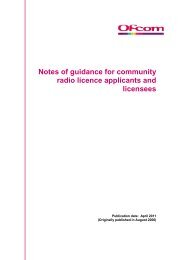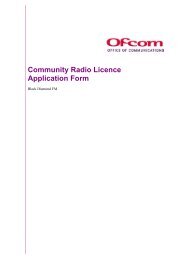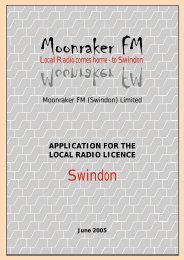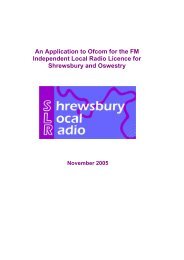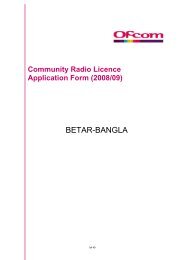UHF2 realignment study - Ofcom Licensing
UHF2 realignment study - Ofcom Licensing
UHF2 realignment study - Ofcom Licensing
Create successful ePaper yourself
Turn your PDF publications into a flip-book with our unique Google optimized e-Paper software.
WIDEBAND BASE STATIONS<br />
No Continental<br />
Interference but all<br />
Wideband Systems<br />
modelled<br />
CEPT aligned<br />
Continental<br />
Interference<br />
CEPT reversed<br />
Continental<br />
Interference<br />
240689 - 450-470 Study Final Print<br />
Version (Dec08).doc<br />
Average Noise<br />
Level<br />
Number of<br />
Blockers<br />
Standard deviation<br />
of noise level<br />
Average Noise<br />
Level<br />
Number of<br />
Blockers<br />
Standard deviation<br />
of noise level<br />
Average Noise<br />
Level<br />
Number of<br />
Blockers<br />
Standard deviation<br />
of noise level<br />
Modelling areas multiple Wide Band Systems<br />
Thames Gateway Birmingham Bradford<br />
Page F-3<br />
-90.97 -91.63 -95.90<br />
316.93 198.06 103.13<br />
0.53 0.76 2.24<br />
-84.4 -85.5 -90.0<br />
1054 368 143<br />
0.43 0.88 2.57<br />
-84.4 -85.5 -90.0<br />
1047 377 143<br />
0.44 0.82 2.58<br />
Comparing the rows without continental interference with the cases where there are<br />
continental interferers, shows for either aligned or reversed that as in the narrowband<br />
situation continental interference has significant effect in the Thames Gateway area. In<br />
addition, it also shows that if the wideband system were to be CEPT aligned there would<br />
be an improvement.<br />
abc


